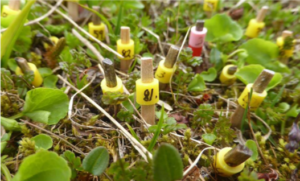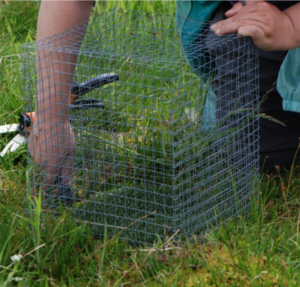S4 Species and Interactions
Editors: Eycott AE & Jentsch A
Impacts of climate change on ecosystems and their functioning are, to a large extent, mediated through the impacts on and responses of the living organisms in the ecosystem. Climate change can be expected to have direct effects at all levels of biological organisation, with interactions  (competition, mutualism, predation, decomposition, etc.) leading to often complex indirect impacts (e.g. Lurgi et al., 2012; Millon et al., 2014). Understanding how organisms, individually and in interaction with each other, are affected by and feed back to changes in the Earth system, is therefore an important research challenge.
(competition, mutualism, predation, decomposition, etc.) leading to often complex indirect impacts (e.g. Lurgi et al., 2012; Millon et al., 2014). Understanding how organisms, individually and in interaction with each other, are affected by and feed back to changes in the Earth system, is therefore an important research challenge.
Monitoring species and interactions is the key to understanding the processes that drive changes in taxonomic and functional biodiversity, which underpins ecosystem functioning and biodiversity conservation value. In this chapter we provide guidance on quantifying the consequences of climate change for a broad range of organisms and ecological processes, across levels of organisation, through experimental or observational approaches.
 The majority of the protocols are about plants as they comprise the majority of biomass in most terrestrial ecosystems and their sessile nature means that exposure to treatments is consistent (Moise & Henry, 2010). The remaining protocols are on first-order plant-animal interactions that mediate changes in vegetation dynamics following climate – and other global-change drivers.
The majority of the protocols are about plants as they comprise the majority of biomass in most terrestrial ecosystems and their sessile nature means that exposure to treatments is consistent (Moise & Henry, 2010). The remaining protocols are on first-order plant-animal interactions that mediate changes in vegetation dynamics following climate – and other global-change drivers.
At the level of populations, we cover vital rates such as reproduction, recruitment, growth, mortality, and phenology, as well as the overall impacts on the dynamics and growth rates of populations. At the community level, we provide guidance on the assessment of impacts on plant, invertebrate, and microbial species composition, abundance, and biodiversity, as well as on seed banks and propagule rain. With regards to species interactions, we cover pollination, vertebrate and invertebrate herbivory, and pathogens. We also provide a short motivation for and link to the plant traits protocol handbook (Pérez-Harguindeguy et al., 2013). This chapter does not cover organism responses at the individual level, which are, to some extent, dealt with in chapter 5 on Stress physiology.
References
Lurgi, M., López, B. C., & Montoya, J. M. (2012). Novel communities from climate change. Philosophical Transactions of the Royal Society B: Biological Sciences, 367(1605), 2913-2922.
Millon, A., Petty, S. J., Little, B., Gimenez, O., Cornulier, T., & Lambin, X. (2014). Dampening prey cycle overrides the impact of climate change on predator population dynamics: a long‐term demographic study on tawny owls. Global Change Biology, 20(6), 1770-1781.
Moise, E. R. D., & Henry, H. A. L. (2010). Like moths to a street lamp: exaggerated animal densities in plot-level global change field experiments. Oikos, 119(5), 791-795.
Pérez-Harguindeguy, N., Diaz, S., Garnier, E., Lavorel, S., Poorter, H., Jaureguiberry, P., … Cornelissen, J. H. C. (2013). New handbook for standardised measurement of plant functional traits worldwide. Australian Journal of Botany, 61(3), pp.167-234.